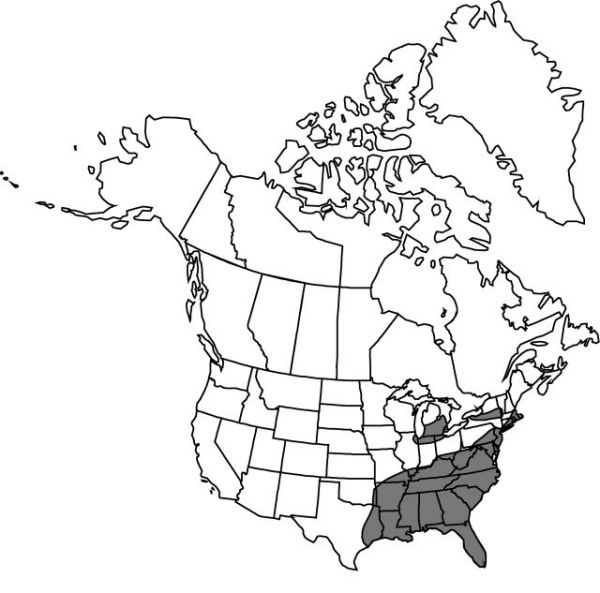Platanthera ciliaris
Gen. Sp. Orchid. Pl., 292. 1835.
Plants 24–100 cm. Leaves 2–4, spreading to ascending, gradually to somewhat abruptly reduced to bracts distally; blade lanceolate to lance-elliptic, 5–40 × 0.6–6 cm. Spikes rather dense. Flowers resupinate, showy, orange; dorsal sepal entire or rarely emarginate; lateral sepals reflexed; petals linear to linear-cuneate, margins apically fringed; lip porrect to descending, oblong to broadly ovate-spatulate, without basal thickening, 8–19 × 4–18 mm, margins deeply filiform-fringed; spur slenderly cylindric, rarely slightly clavate, 20–35 mm; rostellum lobes scarcely to markedly curving forward, slightly spreading, angular-elongate; pollinaria with stalks nearly straight to curved forward; pollinia remaining enclosed in anther sacs; viscidia orbiculate; ovary slender, 12–27 mm.
Phenology: Flowering (Jun–)Jul–Sep.
Habitat: Moist sandy and peaty meadows, marshes, prairies, pine savannas, open woods, wet wooded flats, seeping slopes, roadsides, dry wooded slopes, sphagnum bogs
Elevation: 0–1700 m
Distribution

Ont., Ala., Ark., Conn., Del., D.C., Fla., Ga., Ill., Ind., Ky., La., Md., Mass., Mich., Miss., Mo., N.J., N.Y., N.C., Ohio, Okla., Pa., R.I., S.C., Tenn., Tex., Va., W.Va.
Discussion
Selection for longer spurs in response to local pollination pressures on the southeastern Coastal Plain has been documented in Platanthera ciliaris, but the extent of variation is minimal, and the situation does not appear to be comparable to that in P. blephariglottis.
Hybrids of Platanthera ciliaris with P. blephariglottis are P. ×bicolor (Rafinesque) Luer and with P. cristata are P. ×channellii Folsom; until recently the latter was confused with P. chapmanii (J. P. Folsom 1984).
Selected References
None.